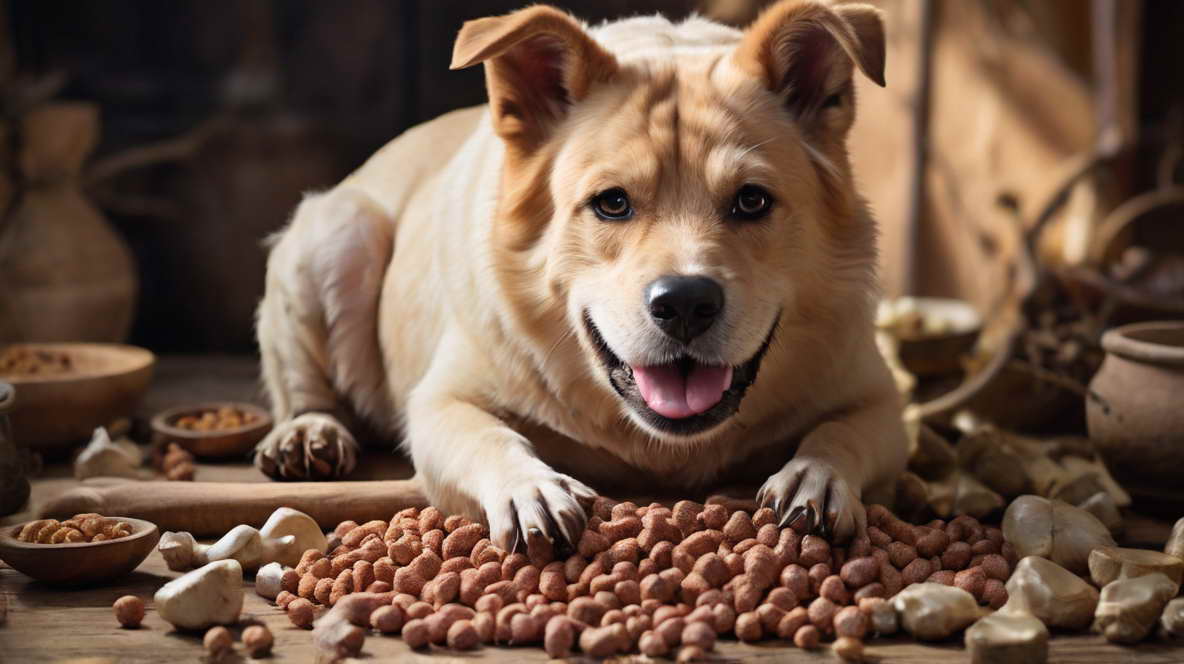
Are Grinding Bones For Dog Food Good For Your Dog?
PETSIDI – Hey there, buddy! I just got back from a sweet little trip to the Australian Outback, and let me tell you, those dingoes sure know how to feast on some gnarly bones. Got me thinking about the whole bone grinding debate for our furry friends back home.
Now, I know what you’re thinking, “But isn’t that, like, dangerous for their digestive system?” And you’ve got a point, mate. Feeding your pup raw bones can be a bit of a health risk. But what about those ground-up bone meals you see in some premium dog foods? Are they any better? Let’s dig in and find out!
The Pros of Bone Meal

First off, let’s talk about why bone meal is even a thing in dog food. It’s all about those sweet, sweet nutrients:
- Calcium: Bones are loaded with calcium, which is essential for strong bones and teeth in our pups.
- Phosphorus: This mineral works hand-in-hand with calcium to keep those skeletal structures in tip-top shape.
- Other Minerals: Bones also contain trace amounts of zinc, iron, and copper, which support various bodily functions.
So, in theory, grinding bones and adding them to dog food can provide a nice little nutrient boost. Plus, it’s a way to use up those leftover animal parts that might otherwise go to waste. Eco-friendly and nutritious? Sounds like a win-win, right?
The Cons of Bone Meal

Hold your horses, though! There are a few potential downsides to bone meal that we need to consider:
- Digestibility: Bones are pretty darn tough and fibrous, which can make them hard for some pups to digest properly. This could lead to gastrointestinal issues like constipation or bloating.
- Contamination Risks: If the bones aren’t handled and processed correctly, there’s a chance they could be contaminated with bacteria, heavy metals, or other nasties.
- Nutritional Imbalances: While bone meal is rich in certain minerals, it’s lacking in other essential nutrients like protein and fatty acids. Too much bone meal in your pup’s diet could lead to nutritional deficiencies.
So, What’s the Verdict?

Alright, let’s break this down into a handy little table:
| Pros | Cons |
|---|---|
| Good source of calcium, phosphorus, and other minerals | Potential digestibility issues |
| Utilizes animal byproducts (eco-friendly) | Contamination risks if not processed correctly |
| Can lead to nutritional imbalances if overused |
As you can see, bone meal has its pros and cons. Here’s my hot take:
Moderate amounts of high-quality, properly processed bone meal can be a safe and beneficial addition to your dog’s diet. The key words here are “moderate” and “high-quality.” Too much bone meal, or low-quality stuff that’s been handled poorly, could spell trouble for your pup’s gut health and overall nutrition.
My advice? Check the labels on your dog’s food and treats. Look for reputable brands that use responsibly sourced ingredients and have strict quality control measures in place. And, as always, consult with your veterinarian if you have any specific concerns about your furry friend’s dietary needs.
At the end of the day, a balanced, species-appropriate diet is the way to go for our canine companions. Bone meal can be a part of that, but it shouldn’t be the main event. Variety is the spice of life, and that goes for our pups’ meals too!
So, there you have it, bud! The scoop on grinding bones for dog food. I hope this little nutrition nugget has been helpful. Now, if you’ll excuse me, I’ve got a one-way ticket to the Swiss Alps calling my name. Those St. Bernards have got to be eating something good up there, and I’m dying to find out what it is!
Woof and bon appétit!


Leave a Reply